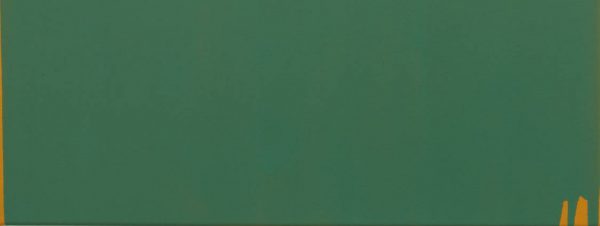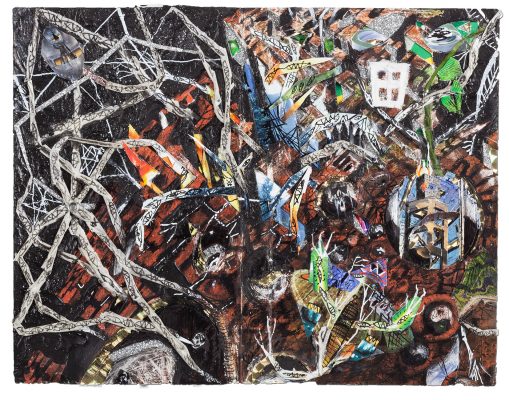The White Book feels as if it is being whispered: each paragraph seems to come from some deep and interior place. Han Kang wrote it whilst living in Warsaw, though in the book the city is never named explicitly. Instead it is only a white city, white for its snow and white for its stone ruins. In an interview with Granta, Kang said that when writing this book, she imagined her prematurely dead sister had lived and visited the city ‘in my place’.
Photographs are interspersed throughout. In some, a woman appears, her face obscured by shadow. In others, only her hands are visible. She holds a child’s gown. She holds a pebble-like object covered in salt. The photographs are of white objects, but in contrast to the white pages, they are startlingly grey. The specks and splashes of whiteness are surrounded by shadow. The woman seems trapped in darkness. Who is this woman supposed to represent? The narrator? The ghost of the sister? The novelist Kang? All or none of the above? The literal answer is that they are photographs of a performance by Kang, shot by the photographer Choi Jinhyuk. But within the pages, they seem to carry the spirit of characters — and the novelist herself.
The text is a loose collection of thoughts, scenes, and images. Few are longer than a page. They are gathered into three sections — ‘I’, ‘She’, and ‘All Whiteness’. ‘I’ follows the narrator considering the colour white and describes her sister’s passing. ‘She’ imagines the sister’s life. Some subsections describe what the sister might have done—having an X-ray, finding a pebble, attempting to befriend a dog. Others contemplate white things—seagulls, a dead butterfly, a lace curtain.
Both ‘I’ and ‘She’ are pensive and slightly sorrowful. At first, this similarity is disorienting: it is hard to see where one perspective ends and the other begins. Slowly, the reader realises that this muddling is the point. The concern of the narrator is not whether the sister would have been a vastly different person, but what it means to replace one life with another. Her mother would not have had a second child if the first had survived, and so the narrator says to her long-gone sister— ‘If you had lived beyond those first few hours, I would not be living now.’
In the final section, ‘All Whiteness’, the narrator describes her attempt to imagine the world through her sister’s eyes. She’d wanted to spare her sister ‘brutality, sadness, despair, filth, pain’, and show her only clean white things. But the narrator cannot conjure a deathless sister, because her understanding of her sister is steeped in death. The conundrum of the book is: what does it mean to have survived? And, if you have survived, how can you recreate what is gone?
Over the course of the text, Kang subtly connects the loss of a sister to the struggles of a European city and the inadequately acknowledged atrocities in Korea. (This tragedy, mentioned obliquely here, is covered at greater length in Kang’s 2016 novel Human Acts.) The narrator imagines the sister looking at candles burning, which have been lit for those killed by the German army. And the sister thinks of the dead in her country ‘that had been insufficiently mourned’. So the sister is left to ‘light a candle for all the deaths and spirits she can remember—including her own’. And, for a moment, the book becomes a candle in the reader’s hands—a flickering white light that is lovely and mournful all at once.
Kang’s use of colour as an organising principle calls to mind Maggie Nelson’s Bluets, released in the USA in 2009. Bluets is also a fragmentary meditation on colour (in Nelson’s case blue). Nelson imagines what it means to love blue, which becomes a metaphor for melancholy and desire and a past relationship. Despite their similarities, the two books are very different in pitch. Nelson’s work glories in intellectual pyrotechnics: she quotes from Schopenhauer, Henry James, and Wittgenstein; she reports on clinical psychology and studies of spectrum from a scientific journal; she numbers each section of Bluets in a relentless outpouring, until she reaches 240. Kang has only three major sections and the subsections are unnumbered. They are divided using white space, as if the narrator needs to take a breath between each thought. When she references another writer, it is not to display academic credentials but to tell us the name of his daughter. A reader who enjoyed Bluets will probably appreciate The White Book, but they are as distinct from one another as new snow is from clear sky.
It is her third collaboration with her translator Deborah Smith and readers of The Vegetarian and Human Acts can expect the same linguistic grace. However, while the first two books were clearly novels, The White Book is slippery. It is listed as fiction, but could easily be read as poetry or a collection of lyrical essays. Kang has said ‘I hope that it is not a “fixed” book, only a white book’. What does this mean? In traditional Korean culture, white represents both death and innocence. It is particularly fitting for the narrator’s dead sister. And this fragility is a topic to which the book comes back again and again, whether in the form of snow (‘mysterious hexagons melting away’) or in a bombed city’s ‘white glow of stone ruins’. It is something that even the book as a physical object replicates in the reader’s hands. It is difficult to protect a white book. Slotted in a tote or a handbag, it will easily become smudged and wrinkled. Rain and grass will change the cover. The book itself is vulnerable and therefore precious. It is a work that inspires the reader to be kinder to all that is ephemeral in the world.




